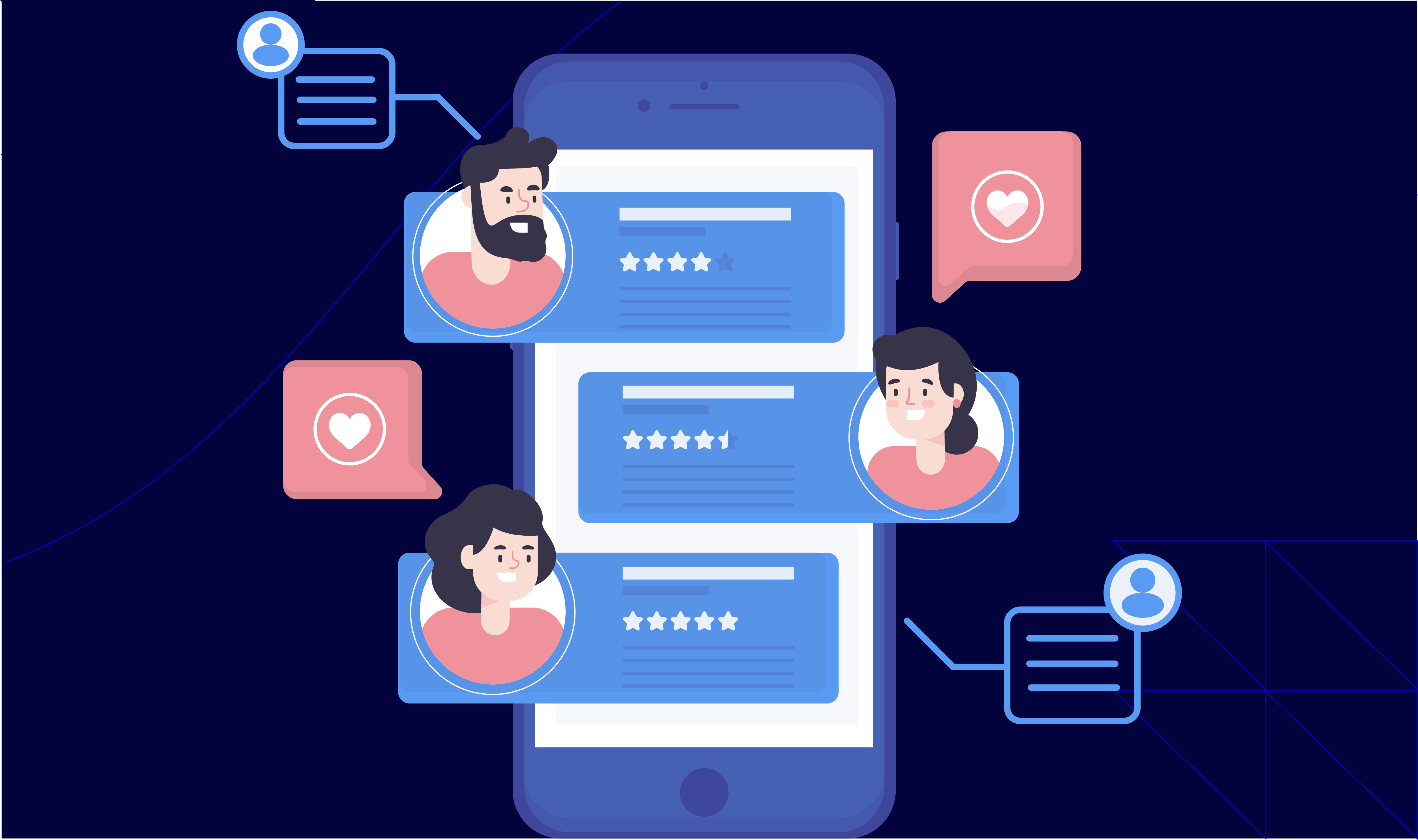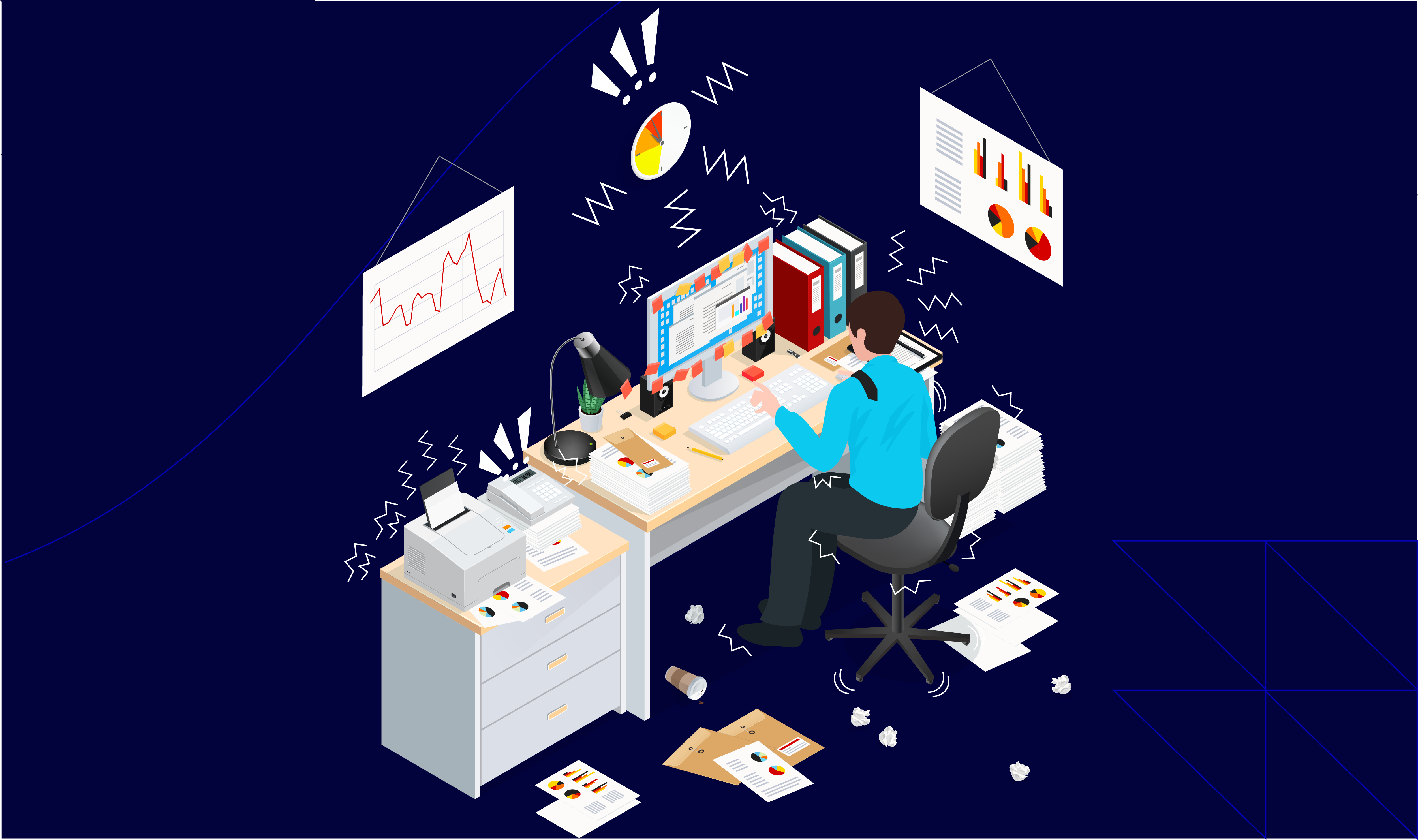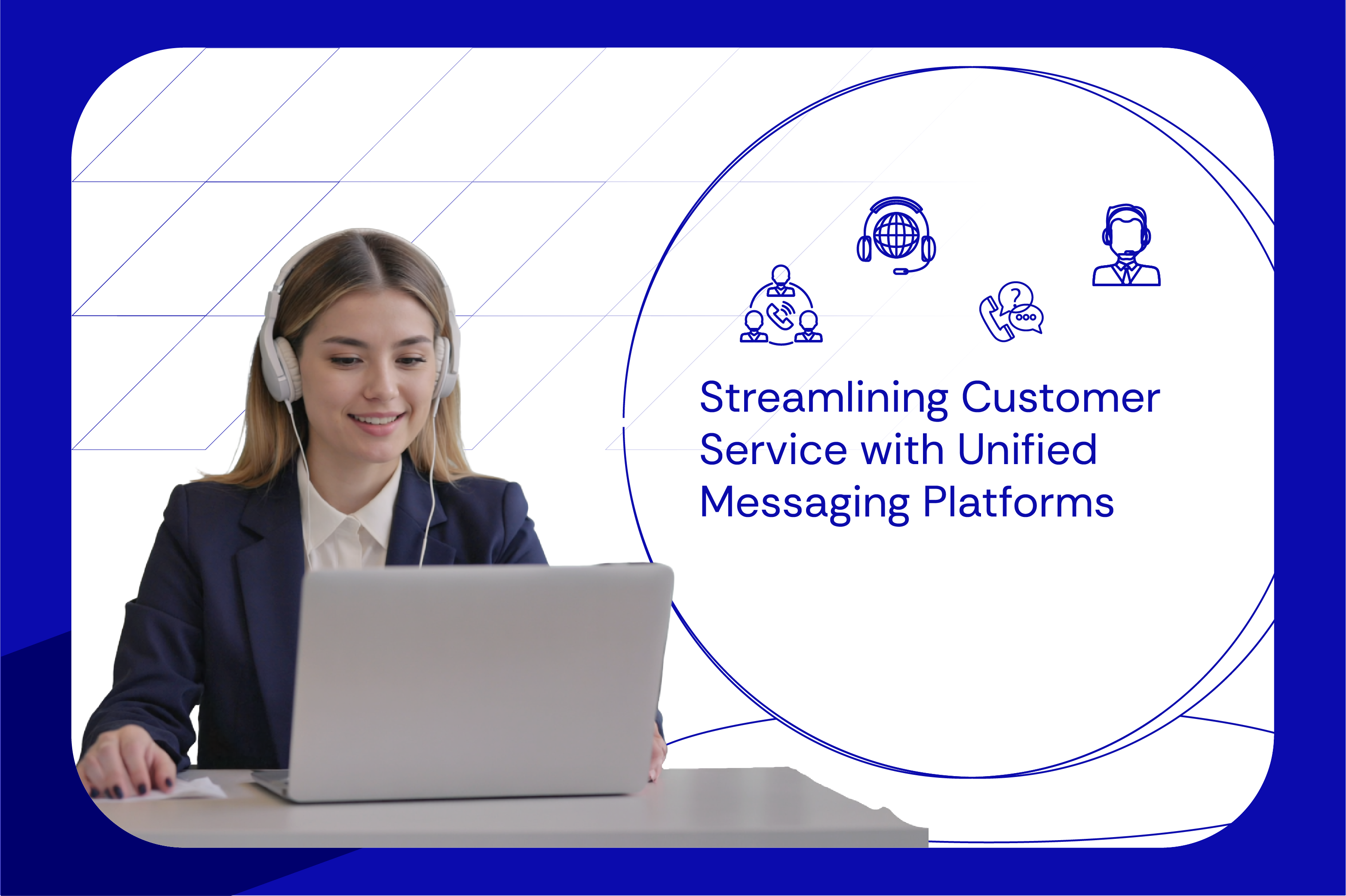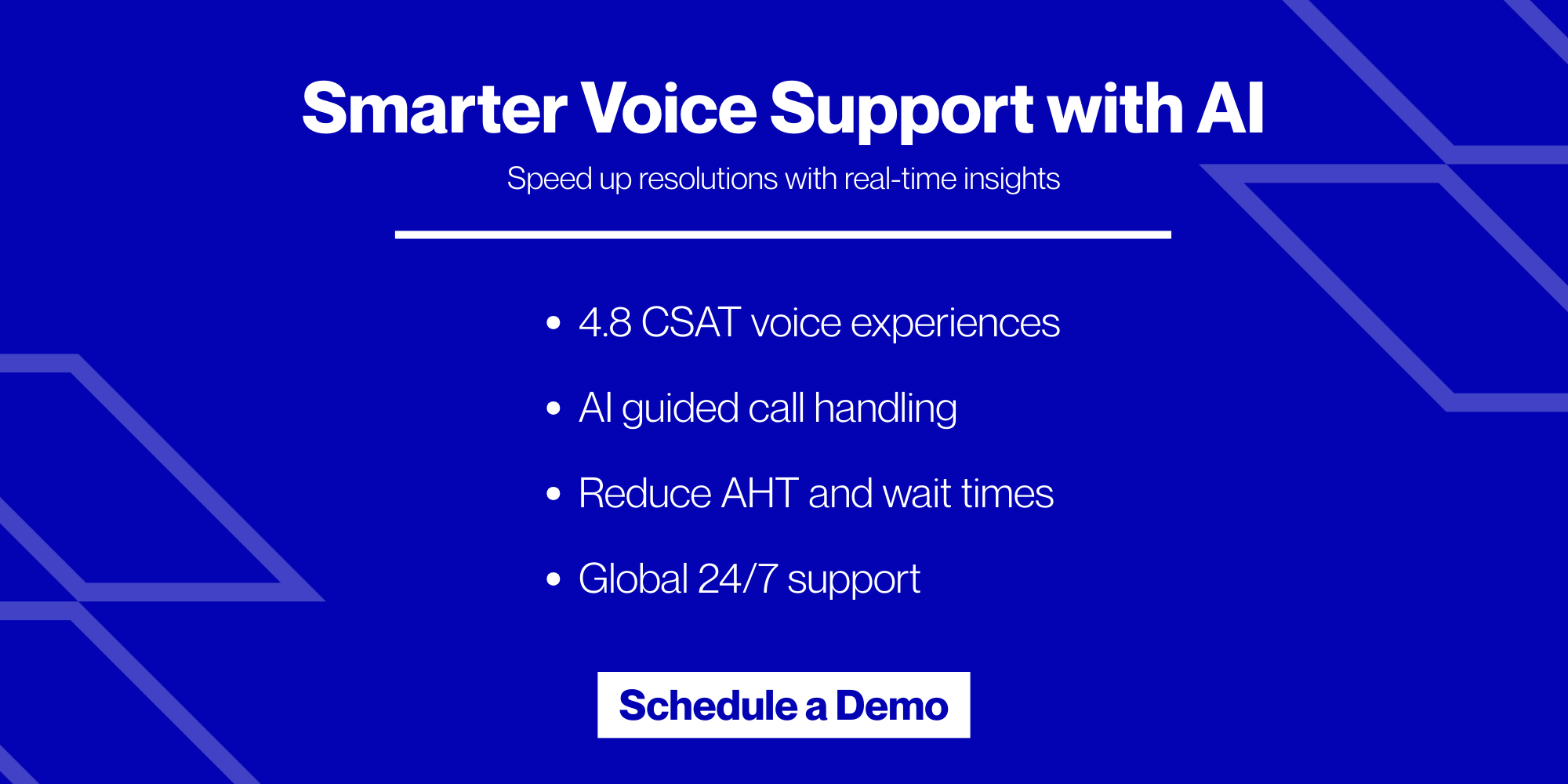A unified messaging platform combines multiple communication channels (like email, chat, SMS, and social media) into one interface. Through it, your support agents can manage all customer interactions from a single dashboard. This cuts response times and boosts CX.
Too many inboxes, not enough time? That’s the story of at least a million SMBs! Today, customers use many ways to contact businesses, such as:
Managing all these channels separately is hard and usually leads to delays or missed messages. So, what’s the solution? Ever heard of a “unified messaging platform”?
It is a tool that brings all your customer messages into one place. You don’t need to check each channel one by one. Everything (emails, chats, texts, social messages) shows up in a single dashboard!
So, want to minimize resolution times and stay on top of customer queries? In 2025, set up an integrated customer service platform. Need help? In this article, you will learn what a unified messaging platform is and how it works. Next, you will learn some of its key benefits and check out some popular platforms you can consider.
What is a Unified Messaging Platform?

A unified messaging platform is a tool that brings all your business messages (emails, SMS, voicemails, chats, and more) into one place. Instead of checking five different apps, you and your team can view and respond to everything from a “single dashboard”.
This lets your team stay organised and respond to customers without switching between platforms.
How Does it Work?
Studies show that companies with a unified customer experience (UCX) have lower operating costs. That’s largely because employees:
- Do not need to duplicate efforts
- Have instant access to customer information
Thus, by using an integrated customer service platform, your business can deliver exceptional omnichannel customer service solutions. For more clarity, let’s study how it works:
Step I: Pulling of Messages
The unified messaging platform pulls messages from:
- SMS
- Live chat
- Voicemail, and more
Step II: Central Message Storage
All the pulled messages are stored in one place. Your agents don’t need to manage each customer support channel separately. They can:
-
- Search
- Archive
- Retrieve any message from one system
Additionally, your agents can check and respond to every message from their phone, laptop, or desktop.
Step III: Message Conversion (if required)
Some unified messaging platforms convert one message type into another. For example,
- Voicemails can be turned into text
- Faxes can be received as PDF files in your inbox
This makes them easier to read and manage.
Step IV: Real-Time Notifications
Your agents get alerts when a new message comes in. Thus, they can respond on time without missing anything important.
Step V: Always Synced
When your agents read or delete a message on one device, it updates everywhere. This keeps your team in sync and avoids confusion.
6 Proven Benefits of Using a Unified Messaging Platform in 2025

For businesses, a unified messaging platform brings:
- Simplicity
- Speed
- Control
Instead of using separate apps, you and your team can reply to everything from a single dashboard. This makes it easier to offer multi-channel customer service. Also, it reduces the risk of missing any message.
For more clarity, let’s check out some key benefits you can realise in 2025:
1. One Place for All Messages
An integrated customer service platform promotes centralised communication. It lets all customer messages land in one shared inbox.
As a result, your agents do not need to check different platforms one by one. Whether a customer messages on Facebook, email, or chat, your team can view and reply in one place. This keeps things organised and avoids message gaps.
2. Less Switching, More Doing!
When your team isn’t jumping between tabs or devices, they can handle more conversations. With all messages in one system, it’s easier to respond and take action. To gain the most, you can also set rules to:
- Assign messages
- Use templates to save time.
Additionally, your agents don’t need to learn different tools for each customer support channel. They can use one application to read, reply, forward, or delete messages (no matter where they came from).
3. Customers Get Clear and Consistent Replies
Your customers can reach out on any support channel, and they’ll get replies without delay! This happens because your team can see past conversations and customer details in one view. Thus, they don’t need to ask the same questions again. Consequently, customers feel heard and stay loyal.
4. Teamwork Without the Back-and-Forth
Several modern unified messaging platforms allow your team to:
- Tag each other
- Share internal notes
- Assign tasks
This keeps everyone aligned and makes sure only the right person handles each message. It also avoids duplicate replies or missed follow-ups.
5. Full Message History at a Glance
The unified messaging platform keeps a full record of each customer’s past messages across channels. In one place, your team of agents can see:
- What the customer asked earlier
- Their past issues
- Any ongoing requests
This allows your team to solve problems quickly without repeating steps.
6. Automate Workflows and Responses
In an integrated customer service platform, you can:
- Set up rules to route messages to the right team
- Use pre-written replies for common questions
- Add a chatbot to handle basic queries
Additionally, you also get data on how your team is performing! This lets you improve your customer service.
7 Top Unified Messaging Platforms in 2025

Did you know? 90% of consumers rate an “immediate” response as important, with 60% defining “immediate” as within 10 minutes! Can your team meet such tight expectations, juggling between multiple customer channels? The answer is a big “No”!
Solution? – Pick a unified messaging platform. For your reference, below is a list of seven top platforms you can consider for your business:
| Platform | What It Does Best | Who Should Use It |
| Tidio |
|
|
| Nextiva |
|
|
| Zendesk |
|
|
| Front |
|
|
| Hiver |
|
|
| Crisp |
|
|
| Messagely |
|
and
|
Too Many Tools, Too Much Chaos? Try Atidiv’s Omnichannel Customer Service Solutions in 2025!

If you are running a business in 2025, you must offer omnichannel messaging solutions to your customers, such as email, SMS, WhatsApp, social media support, live chat, and more.
Such an offering creates the need to set up a unified messaging platform. Using it, you can:
- Manage all messages from one place
- Keep things organised
- Make sure no customer is left waiting
But let’s be honest! Picking the right platform and managing it is overwhelming. Tidio, Zendesk, Front, Hiver, etc. – each offers something different, and it’s hard to know which one fits your business.
Also, their setup takes time. And, training your team takes more time. Sometimes, before you know it, you’re buried in tools you don’t fully use! So, why not skip the hassle altogether?
In 2025, outsource your messaging support to a leading customer experience specialist agency, like Atidiv. Our expert offers
- Omnichannel messaging solutions
- Voice customer care
- Social media support
- Live chat outsourcing services
- Inbound and outbound call center services
With Atidiv, you can achieve cost savings of up to 60% compared to running in-house support teams. With over 15 years of experience and a client base that spans 70+ companies in the U.S. and UK, we’ve helped businesses save millions!
Let Atidiv be your messaging partner in 2025! No confusion, no chaos, just results!
FAQs About Unified Messaging Platforms
1. Why is managing multiple communication channels so challenging?
Please realise that each platform (email, WhatsApp, SMS, live chat) requires separate:
- Logins
- Monitoring
- Workflows
Usually, this leads to missed messages, slow replies, and confused teams. By using a unified messaging platform, you can bring all messages into one place. This makes communication easier to manage and track.
2. How can I make sure my team doesn’t miss any customer messages?
When you offer multi-channel customer service, it’s easy for messages to get lost! Through a unified messaging platform, you can keep everything in one shared inbox. This way, your team sees every message, regardless of where it came from. Such an approach improves response time and reduces errors.
3. Will using one integrated customer service platform slow down response time across channels?
No! Unified messaging platforms are designed to speed up response time. Since all messages appear in one dashboard, your team doesn’t waste time switching between apps.
To further minimise resolution times, you can even set rules to auto-assign or tag messages based on urgency or topic.
4. What if my business grows and I add more communication channels later?
Most modern unified messaging platforms are built to scale. You can add new channels (like social media, live chat, or SMS) without changing the system.
Alternatively, you can outsource your messaging support to leading CX agencies, like Atidiv. Our expert provides 24/7 customer support and can professionally handle high ticket volumes. We grow with your business and are highly flexible.
5. Is it hard to train my team on a unified messaging platform?
Usually, these platforms are user-friendly. Post-setup, your team doesn’t have to learn five or six separate apps (like Gmail for emails, Messenger for chats, Instagram for DMs, etc.). Instead, your team only needs to learn one single platform that brings all those messages together.
This saves time and avoids confusion. Additionally, many platforms offer onboarding, tutorials, and automation features. They further reduce manual tasks and simplify daily work.

